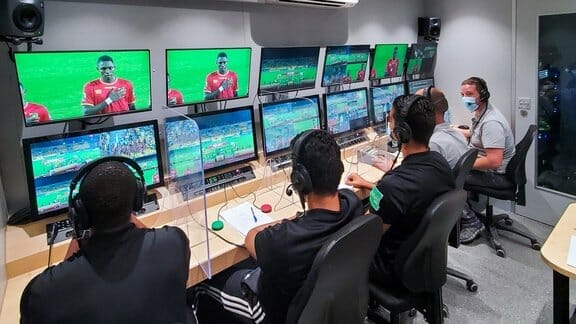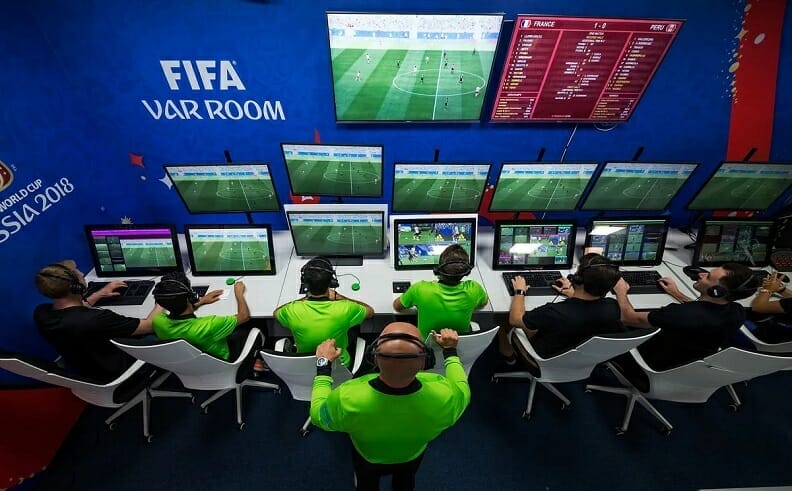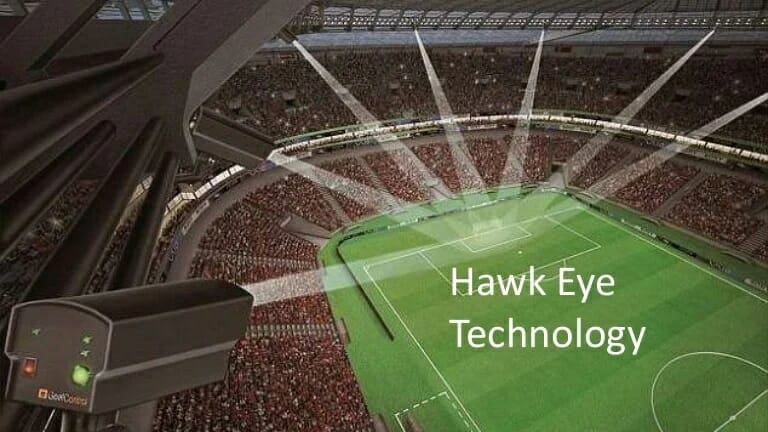How Does VAR Work? Here’s our guide for engineers who love football and other sports.
Many engineers love football and watch them regularly. If you wondering what the video assistant referees do in the game, here is a simple explanation.
Video assistant referee, also known as VAR, is a video replay system used in some association football matches. It is a software engineering technology designed to assist the referee in determining whether or not a goal has been scored, and deciding whether a penalty should be awarded.
VAR is the biggest development in the officiating of the global game in the modern era. Introduced to increase the accuracy of refereeing decisions and reduce glaring errors regarding vital decisions to an absolute minimum.
Ratified as a law of the game by the International Football Association Board (IFAB) in 2021, the subject of VAR and the technology involved has become an endless subject of debate for football fans and provides an additional layer of excitement/frustration for those betting on the game via the top betting sites.
VAR is a topic seemingly never too far away from the technology in sports headlines. But what exactly is it? And how does it work?
What is VAR?
VAR stands for Video Assistant Referee. In addition to the on-field referee, each game utilizing the technology will employ an off-site VAR team consisting of the Video Assistant Referee, his assistant, and the replay operator.
Housed in a booth containing numerous screens displaying the game in question, the VAR team has several advantages over the on-field official in arriving at the correct decision according to software engineers. Namely:
- The ability to watch the incident in question from a range of different angles. The VAR viewing booth has access to 33 broadcast cameras, including eight slow-motion cameras, four ultra-slow-motion cameras, and two specialized offside cameras.
- A replay facility.
- Freeze frame and zoom technology for particularly close calls e.g., handball in the area.
- Hawk-Eye Technology: Used to superimpose horizontal lines across the game image when assessing tight offside decisions in the build-up to a goal.

Protecting the Flow of the Game
When initially proposed, the main objection against the use of VAR concerned the impact that it may have on the flow of the game. Unlike stop/start sports such as cricket or tennis, which have each utilized technology to review the action for some time now, football is a naturally free-flowing game. To keep disruption to an absolute minimum, VAR may only be used to assess “clear and obvious” errors or serious missed incidents in one of four areas pivotal to the outcome of the game:
- Goal/No Goal
- Penalty/No Penalty
- Direct Red Card
- Mistaken identity i.e., the issuing of a card to the wrong player
Factual vs Subjective
Perceived errors or missed incidents then fall into one of two key categories:
- Factual – E.g., Offsides in the build-up to a goal, or whether a player was inside or outside the area when fouled. In such incidents, the referee will be informed of the correct decision and take the appropriate action.
- Subjective – Most commonly the severity of a foul. E.g., the on-field referee may be advised to view a replay following the issuing of a yellow or red card, or if a foul has taken place out of their line of sight. In such incidents, the referee will view a replay in the pitch side Referee Review Area (RRA) before coming to a decision. In the case of subjective incidents, the on-field referee will always make the final decision.
VAR Signalling
The VAR team and on-field referee are in constant communication throughout a match. If an incident is being checked by VAR, the referee will inform players and fans by pausing play and holding his finger to his ear. If a subsequent pitch side review is recommended, the on-field referee will signal this by making the outline of a rectangle with his fingers, before making his way to the Referee Review Area. Upon completion of the review, the referee will again make the rectangle sign before announcing his decision.
Is VAR Working?
Opinions on the impact that VAR has had on the flow of the game and the overall spectacle of the sport will always be subjective. However, if judged purely on the ability to come to the right decision it would seem that VAR is on the way to achieving its objective.
Figures released by the Premier League show that in 2018/19 (the last season before the introduction of VAR) the correct decision arrived at 82% of the time in the four key match incidents outlined above. Following the introduction of VAR in 2019/20, this figure rose to 94%. Not perfect, but a significant step in the right direction. Like it or loathe it VAR seems here to stay, and most fans seem to be concluding that the pros outweigh the cons.












